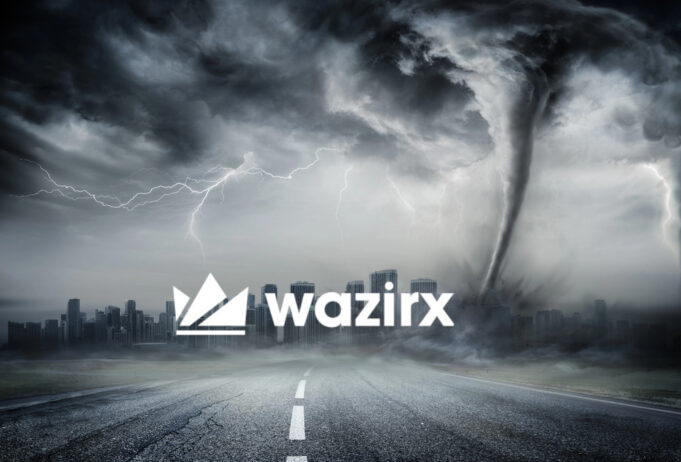In July 2024, one of the most devastating crypto heists in recent memory shook India’s burgeoning cryptocurrency market. Hackers stole over $235 million from the WazirX exchange and laundered it via Tornado Cash. The breach, which compromised both customer funds and the exchange’s operational integrity, has left over 4 million users grappling with uncertainty as they await recovery of their assets.
The Mechanics of the Hack and Laundering via Tornado Cash
Shortly after the breach, attention turned to the hackers’ tactics. Blockchain security firms, including Arkham Intelligence and Cyvers, revealed that the WazirX hackers began laundering their stolen digital assets through Tornado Cash, a decentralized privacy mixer notorious for helping anonymize cryptocurrency transactions. By funneling approximately $6 to $10 million through Tornado Cash in small increments, the hackers managed to obfuscate the trail, significantly complicating recovery efforts.
>>> Read more: Inside the WazirX Hack: How Lax Security Practices Led to a $230M Cryptocurrency Theft
The choice of Tornado Cash, a service under U.S. sanctions, is not surprising, given its reputation for facilitating the laundering of stolen assets, especially among groups like North Korea’s Lazarus Group. The Lazarus Group, linked to the WazirX hack, has been implicated in several high-profile crypto thefts in recent years. Analysts note that these cybercriminals have perfected the art of chain-hopping – moving assets across different blockchains to further confuse tracking.
Impact on WazirX Users: Limited Fund Recovery
WazirX, while dealing with the immediate chaos of the hack, has communicated to users that recovery will be partial at best. Reports indicate that customers may only see 55% to 57% of their funds returned. This grim outlook is the result of both the loss of assets and the challenge of recouping laundered funds, particularly those that have been funneled through Tornado Cash.
WazirX has initiated a restructuring process in Singapore, aiming to manage its liabilities and obligations to affected users. However, this move has provided little comfort to customers. They are still waiting for clarity on when – and how much of – their funds they can expect to recover. The restructuring process is complicated by unresolved legal disputes over ownership and responsibilities between WazirX and Binance, its former partner.
Bleak Prospects for Full Recovery
Using Tornado Cash and other sophisticated laundering tools means that much of the stolen crypto is effectively out of reach. Privacy mixers like Tornado Cash allow hackers to break the link between the origin and destination of assets. That makes it almost impossible to trace funds once they have been mixed. Despite the best efforts of blockchain forensic teams, a significant portion of the stolen assets remains hidden, with no guarantee of recovery.
Broader Implications for India’s Crypto Ecosystem
The WazirX hack has sent ripples through India’s cryptocurrency market. Already contending with high taxation and regulatory uncertainty, the breach has exacerbated concerns about the security of local exchanges. If confidence in platforms like WazirX falters, it could deter new and experienced investors from engaging with India’s crypto ecosystem.
This high-profile hack has also reignited discussions about the need for stronger regulatory frameworks around crypto exchanges. While the Indian government has been cautious about cryptocurrency adoption, incidents like the WazirX hack may prompt a more rigorous approach to securing digital assets and protecting investors.
>>> Read more: WazirX Users Protest $230M Recovery Plan
As hackers continue to launder millions through Tornado Cash, WazirX users are left with few options other than waiting for the exchange’s restructuring efforts to take effect. With only partial recovery on the horizon and ongoing concerns about exchange security, the WazirX hack has become a cautionary tale for the global cryptocurrency community. The attack underscores the need for enhanced security measures and regulatory oversight, particularly in markets like India, where crypto adoption is growing but remains vulnerable to exploitation.
Readers’ frequently asked questions
How does Tornado Cash help hackers evade detection, and why is it so hard to recover stolen funds?
Tornado Cash is a decentralized privacy tool designed to obscure cryptocurrency transactions. It works by breaking the link between the sender and the recipient of crypto assets. That makes it nearly impossible to trace the origin or final destination of the funds. When hackers send stolen crypto into Tornado Cash, the assets are mixed with other users’ funds in the pool. Afterward, the hacker can withdraw “clean” cryptocurrency to new, untraceable addresses. This anonymity tool has been sanctioned by U.S. authorities for its role in facilitating money laundering, especially by malicious actors like North Korea’s Lazarus Group.
The use of Tornado Cash poses a significant challenge to law enforcement and blockchain analysts. While public blockchains like Ethereum are generally transparent, mixers erase transaction histories. They make it exceedingly difficult to identify who owns the funds. This is why recovering assets laundered through Tornado Cash is often out of the question.
Why can WazirX users only expect to recover 55-57% of their funds, and how is WazirX addressing the situation?
The projected recovery rate of 55-57% stems from the fact that a large amount of the crypto stolen in the WazirX hack has been successfully laundered through Tornado Cash, making it irretrievable. Additionally, WazirX’s operational constraints, including liabilities and legal complications following the hack, limit the extent of the recovery. The platform is attempting to mitigate these losses by undergoing a legal restructuring in Singapore, which aims to manage its financial obligations to affected users.
However, the restructuring process, while a necessary step, is not a guarantee for full recovery. The exchange is also embroiled in ownership disputes with Binance, further complicating efforts to secure external funding or partnerships that could aid in restitution. For now, users can only withdraw part of their Indian Rupee (INR) balances, but crypto withdrawals remain restricted.
What are the broader implications of the WazirX hack for India’s cryptocurrency market?
The WazirX hack is a blow to the credibility and trust in Indian crypto exchanges, particularly at a time when the country’s cryptocurrency sector is still grappling with heavy taxation and regulatory uncertainty. The incident underscores vulnerabilities in digital asset platforms, raising questions about the adequacy of security measures implemented by Indian exchanges.
Additionally, the hack has reignited calls for stricter regulations in India, which has adopted a cautious stance on crypto. With over 4 million users impacted and limited recovery options, the incident could cause some investors to shy away from local platforms, opting instead for international exchanges perceived to be more secure. The hack may also prompt regulators to impose stricter controls on exchanges to prevent future incidents.
What Is In It For You? Action Items You Might Want to Consider
Diversify Your Holdings Across Multiple Exchanges
Given the risks exposed by the WazirX hack, it’s essential to avoid concentrating all your assets on a single platform. While WazirX users are grappling with partial recovery and ongoing legal disputes, spreading your investments across different exchanges—preferably ones with robust security measures and strong reputations—can mitigate the risk of a total loss in the event of another hack. Always do thorough research on an exchange’s security protocols and how they handle user assets.
Withdraw and Secure a Portion of Your Funds in Cold Storage
If you’re trading significant amounts of cryptocurrency, consider moving a portion of your assets off exchanges and into cold storage. With WazirX restricting crypto withdrawals and users facing uncertain recovery, the benefits of self-custody are clearer than ever. Cold wallets, which are offline, offer an extra layer of protection against hacks and platform vulnerabilities. By doing so, you maintain control over your keys and reduce your exposure to potential exchange-related issues.
Stay Informed About Exchange Legal Structures and Recovery Plans
As seen with WazirX’s restructuring in Singapore, exchanges may undergo legal processes that affect users’ ability to access their funds. Keep a close eye on the legal status and recovery plans of exchanges where you hold assets. Monitor communications from the exchange, such as updates on legal proceedings and any restructuring plans that could impact withdrawals or compensation. Being proactive in understanding the legal framework can help you react quickly if changes arise.











[…] >>> Read more: WazirX Hack: $235M Laundered Through Tornado Cash […]
[…] >>> Read more: WazirX Hack: $235M Laundered Through Tornado Cash […]